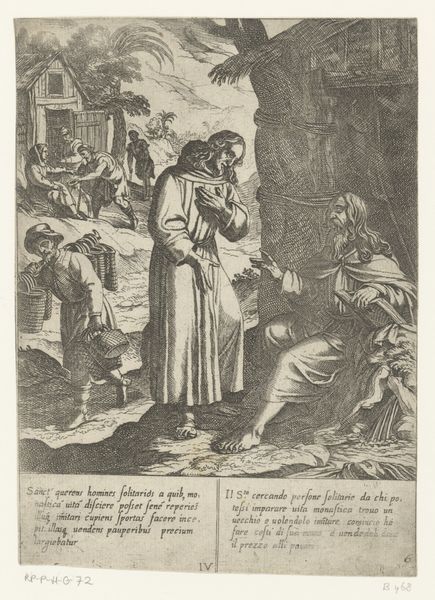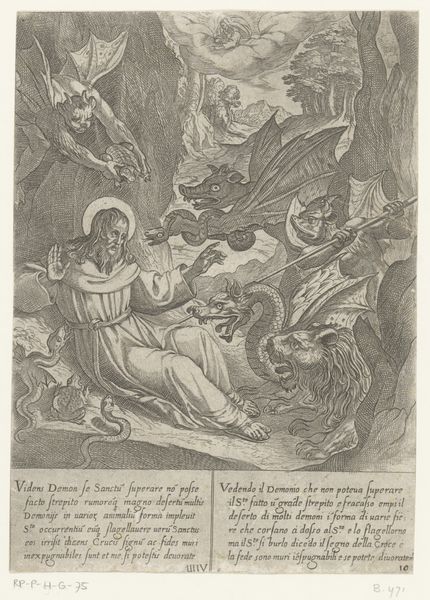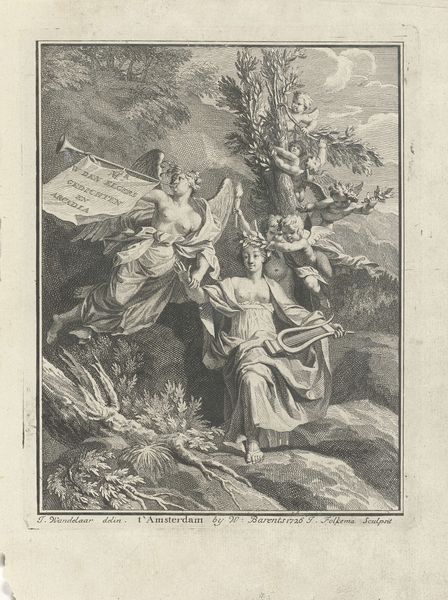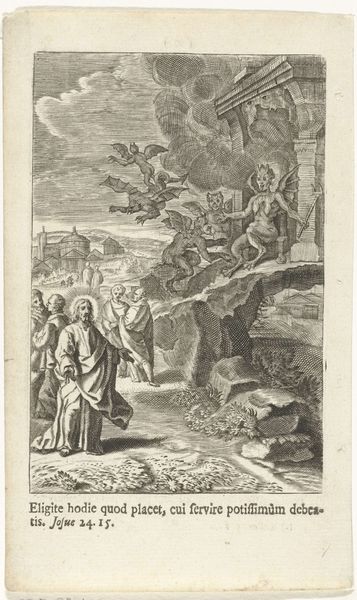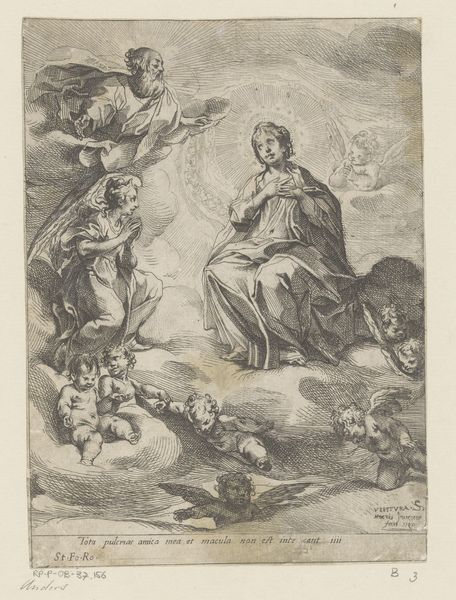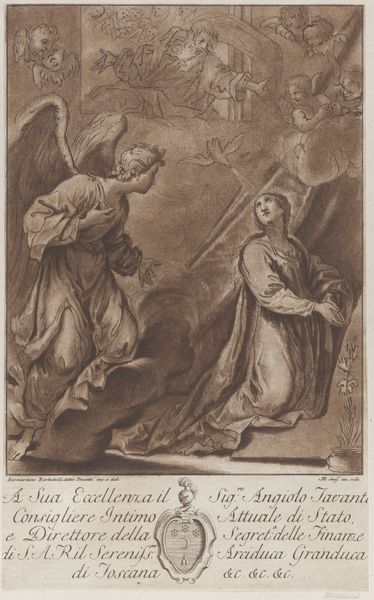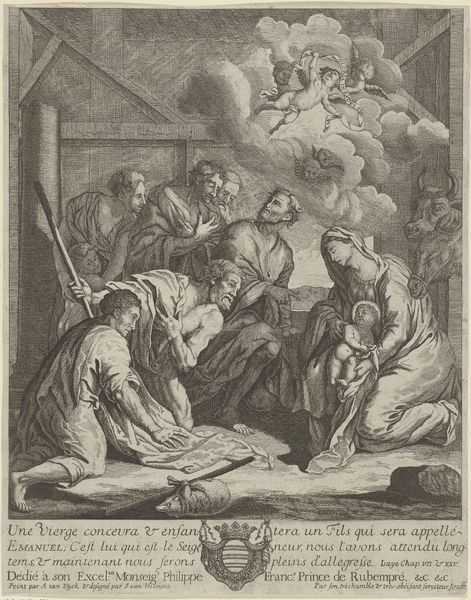
Dimensions: height 231 mm, width 163 mm
Copyright: Rijks Museum: Open Domain
Curator: Let's turn our attention to this engraving by Antonio Tempesta, created in 1598, entitled "H. Antonius bidt van de demonen verlost te worden," or "St. Anthony Praying to be Freed from Demons," which you can find at the Rijksmuseum. Editor: My initial impression is one of frantic energy, even chaos, packed into a relatively small space. The use of line is incredibly dense. It feels very overwrought and tormented. Curator: Yes, the Mannerist influence is evident in that very dynamic composition. It captures a key moment in the life of St. Anthony, the hermit, as he battles temptation and demonic forces. It's about psychological struggle made manifest. Editor: I’m really drawn to the process itself—engraving—and how the very labor involved seems to echo Anthony’s own trials. Consider the painstaking effort to render that level of detail and those textures. The lines themselves seem to be battling one another. Curator: That’s a great point. And beyond just the technical labor, Tempesta uses the symbolic language of the era—the demons, the divine light, the placement of St. Anthony between them. The composition serves as an allegory of the human soul caught between good and evil, reflecting common anxieties in late 16th century Europe. Editor: I see the symbolic element, of course. I still find myself focused on how such potent ideas were materialized. The print medium itself made this vision widely accessible, and for those with fewer resources, it allowed for a kind of physical engagement. How many hands touched the matrix, pressed paper to it, inked and re-inked the work for broad distribution? That process connects this depiction to an active material and spiritual life, quite literally embodied through labor. Curator: That's fascinating! Seeing it from the perspective of the hands that made it, adds another layer. It reminds me how deeply ingrained these images became in shaping cultural narratives. Editor: I agree. Seeing the artistic process helps us acknowledge that this is more than just a surface depiction of a well-known event. Curator: Exactly, reflecting the tangible and lived experiences that informed it and continued shaping history through images.
Comments
No comments
Be the first to comment and join the conversation on the ultimate creative platform.
